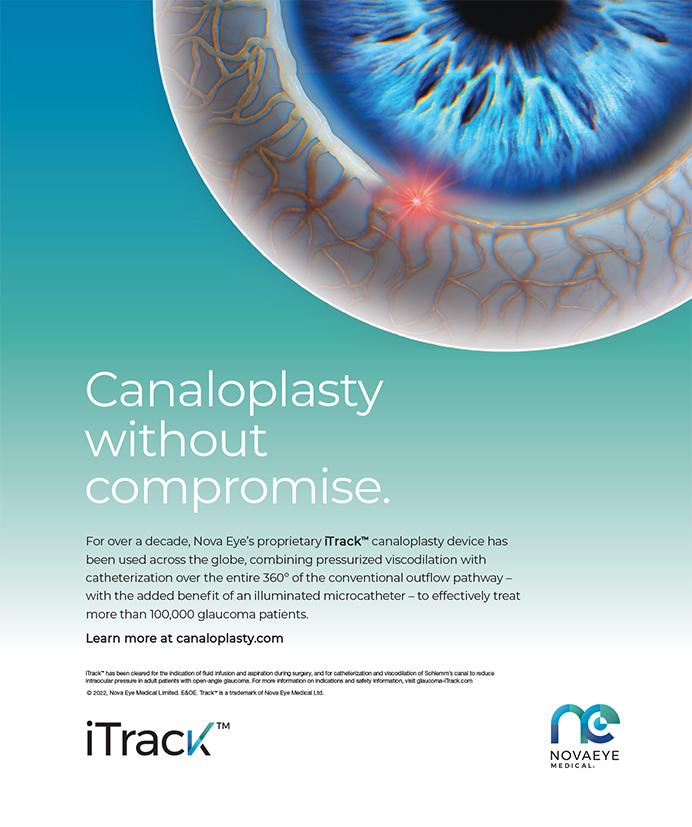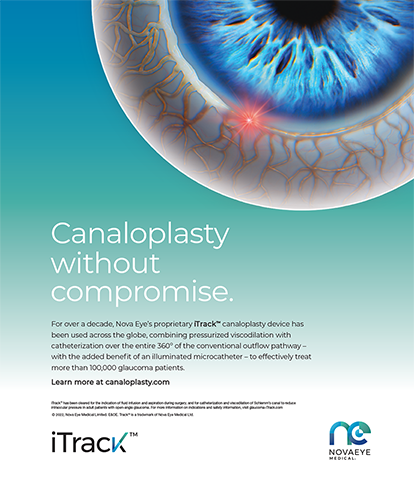New to the US market, the Ladar6000 excimer laser (Alcon Laboratories, Inc., Fort Worth, TX) features numerous hardware and software upgrades to optimize clinical outcomes and improve patient flow. For example, the platform offers a repetition rate that is 50 faster than that of the Ladarvision 4000 system (Alcon Laboratories, Inc.). The Ladar6000 also offers comparatively more working space, improved effluent removal, more efficient calibration, and a new laser cavity. The system was recently approved by the FDA for the treatment of both hyperopia and myopia with and without astigmatism.
The Ladar6000 system contains more than 80 new components. It offers increased surgeon control, faster, more accurate treatments, and quicker, improved calibration. Additionally, the system only requires weekly, rather than daily, gas exchanges. As a result, the Ladar6000 improves patient flow.
FASTER TREATMENT TIMES
The repetition rate of the Ladar6000 system is almost 100Hz, which means that all procedures for MRSE corrections of between 4.00 and -10.00D can be completed in less than 1 minute. A shorter treatment time minimizes corneal stromal dehydration and will thus likely produce more consistent outcomes.
One of the new system's advantages is that it automatically places the limbal ring at the Ladarwave (Alcon Laboratories, Inc.), which makes the capture-match-treat registration process faster. Because the system provides side-by-side viewing of the wavefront image, it ensures a specific alignment of the customized ablation profile with the preoperative wavefront image. Additionally, the system compensates for cyclotorsion as the patient moves from an upright to a supine position. Finally, the Ladar6000's automated registration makes procedural times more rapid and consistent.
NO LEARNING CURVE
Two advantages of the Ladar6000 system, from the surgeon's perspective, are that it operates in a straightforward manner and is easy to master. The system has many built-in safeguards similar to the Ladarvision 4000. For the physician familiar with the previous model, there is virtually no learning curve for mastering the new technology.
OTHER ADVANTAGES
Like its predecessor, the Ladar6000 has a small flying-spot laser, but the beam of the new system is tighter, meaning it is more acutely Gaussian. In my experience, if the beam is not very tight, there is a lot of scatter, which may make the treatment less exact. Compared to the Ladarvision 4000, the new system's treatments look much cleaner after surgery, and patients seem to see better earlier postoperatively.
The Ladar6000 also has sophisticated software that makes the laser's operation by the surgeon and the technician relatively foolproof. The Ladar6000 software is designed to prompt the technician to perform the calibration and testing in an orderly manner, and it will not permit moving to the next step if the laser is not operating properly. Similarly, the information required from the physician about the patient must be entered into the computer and then reviewed by the surgeon before the treatment can be performed. Because the process is so orderly, it is difficult to deviate from and therefore makes errors less likely.
CLINICAL TRIAL RESULTS
The Ladar6000 has expanded indications to treat almost all myopes. Surgeons may provide Customcornea (Alcon Laboratories, Inc.) with this system to correct myopia as high as -8.00D, with or without astigmatism of up to -4.00D–one of the broadest customized myopic treatment ranges for any wavefront-guided system.
The clinical trial to obtain expanded indications included 295 eyes.1 Of these, 232 had myopic astigmatism, and 63 had spherical myopia. The mean spherical equivalent was -4.10D preoperatively, with a range of -0.88 to 10.63D. The mean sphere was -3.75D, and the mean cylinder was -1.07D.
Six months after treatment with the Ladar6000, 95 of the eyes had 20/25 or better UCVA, and 89 had 20/20 or better UCVA. Additionally, 99 of the eyes had 20/20 or better BCVA, and 42 had a BCVA of 20/12.5 or better, compared with only 18 preoperatively.
Dr. MILSTEIN'S TECHNIQUE
Before surgery, I administer 10mg of Valium (diazepam, Roche Pharmaceuticals, Nutley, NJ) orally to my patients and dilate their pupils with 1 Mydriacyl (Alcon Laboratories, Inc.) and 2.5 Neo-Synephrine (Bayer Corporation, West Haven, CT). After approximately 20 minutes, the patient receives a drop of Alcaine (Alcon Laboratories, Inc.) and is brought into the treatment room and draped using Tegaderm drapes (3M Health Care, St. Paul, MN). Then, using an Amadeus microkeratome (Advanced Medical Optics, Inc., Santa Ana, CA) with the 140-?m head, I create the corneal flap. After the patient is positioned under the laser, the eye undergoes treatment. I reposition the corneal flap and irrigate the interface freely with balanced salt solution.
After the second eye has been treated in a similar fashion, I examine the patient at the slit lamp to ensure that the interface of both eyes is clean and the flap is well positioned. Patients use an antibiotic/steroid combination three times daily for a week postoperatively.
Compared to my results with the Ladarvision 4000 system, I am seeing clearer, better looking corneal flaps and superior visual results. For that reason, I believe my retreatment rates will be cut in half with the Ladar6000.
I have owned a number of lasers over the years, and none has been as consistent or easy to use as the Ladar6000. Its software sophistication is impressive and reassuring, because it reduces the opportunity for technical errors.
Bernard A. Milstein, MD, is Clinical Professor of Ophthalmology at the University of Texas Medical Branch in Galveston, founder of the Eye Clinic of Texas in Galveston and League City, and Director of the Ophthalmic Laser Center in League City, Texas. He is a consultant to Alcon Laboratories, Inc., but stated he holds no financial interest in the products mentioned herein. Dr. Milstein may be reached at (281) 332-3937; bmilstein@ecot.com.


